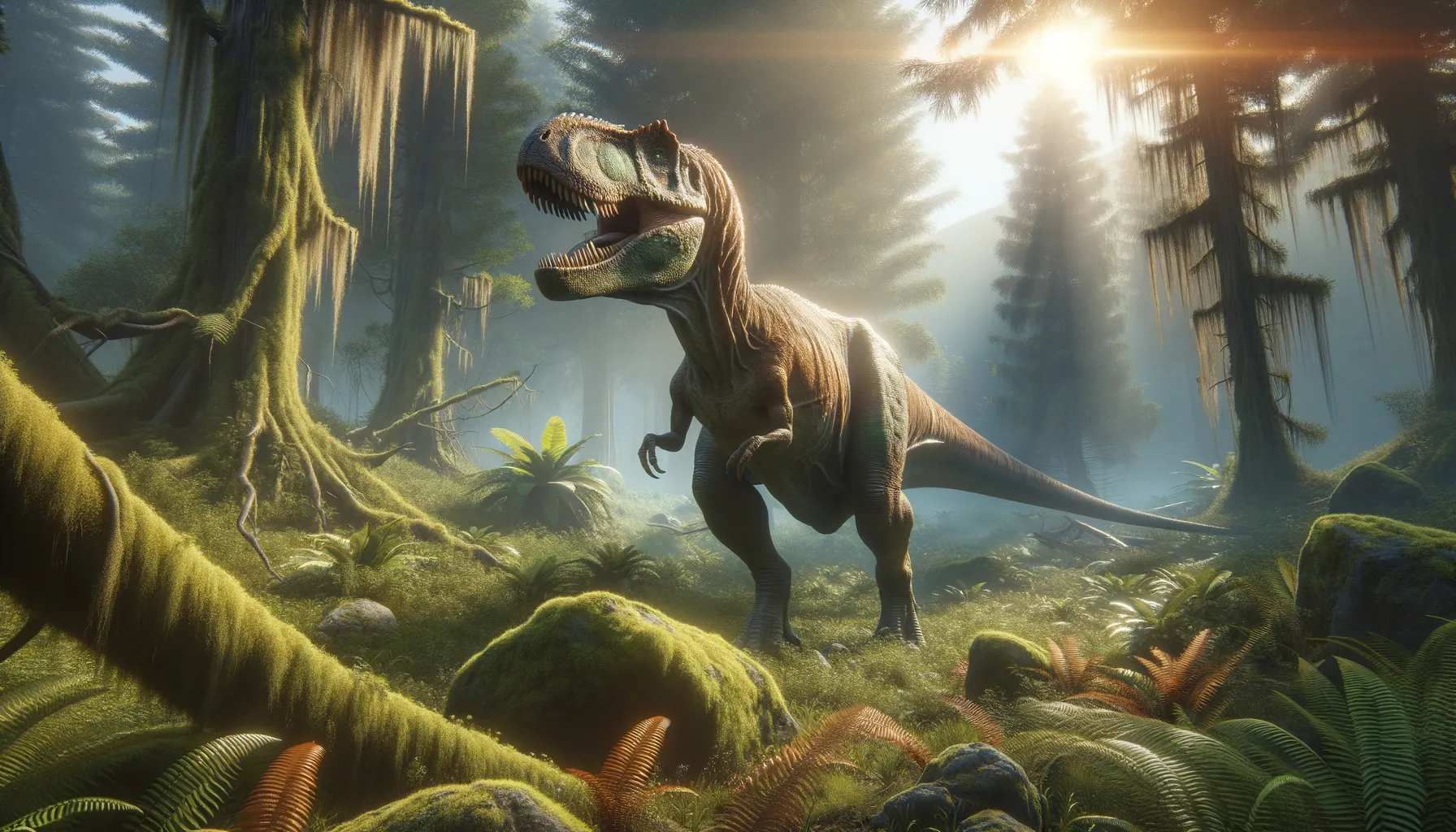
Macelognathus
Swift predator with a long jaw of intrigue.
Period
Jurassic
Length
Approximately 3 to 4 meters long.
Height
About 60 centimeters tall.
Weight
Weighed around 35 kilograms.
Macelognathus was a small, bipedal dinosaur that roamed North America during the late Jurassic period. It is known for its distinctive elongated jawbones. Despite its relatively small size, it was an agile predator that could have fed on small animals or insects. The genus name, meaning 'long jaw,' reflects its prominent mandibular features, which have intrigued paleontologists since its discovery.
Diet
Macelognathus likely had a carnivorous diet, feeding primarily on small animals, such as lizards or insects. Its sharp teeth suggest it was adept at catching and consuming relatively small prey.
Hunting
Due to its size and agility, it likely used speed and surprise to catch its prey. It may have used its keen eyesight and quick reflexes to hunt effectively in its environment.
Environmental challenges
Macelognathus faced a range of predators, including larger theropods that dominated its era. To survive, it relied on its speed and agility, often seeking refuge in dense vegetation. The changing climates of the late Jurassic could have occasionally altered its hunting territories, requiring adaptation to new food sources and terrains.
Speed
Considered to be moderately fast for its size.
Lifespan
Estimated to be several decades.
First discovery
Discovered by O. C. Marsh in 1877 in Wyoming.
Fun Facts
- Macelognathus was a small dinosaur-like reptile known from the Late Jurassic period, about 150 million years ago.
- Its name means 'long jaw' in Greek, referring to its distinctly elongated jaw structure.
- Unlike many of its dinosaur contemporaries, Macelognathus was not a true dinosaur but a crocodile-like animal called a sphenosuchian.
- It was likely a fast and agile predator, hunting small animals with its long, slender body.
- Fossils of Macelognathus have been found in the famous Morrison Formation, a rich deposit of Late Jurassic dinosaur remains in the western United States.
- Though not as famous as its dinosaurian neighbors, Macelognathus provides important insights into the diversity of prehistoric life during the Jurassic period.
- Its discovery helps scientists understand the evolutionary history of crocodilians, showcasing their diversity and adaptation over millions of years.
Growth and Development
Macelognathus grew relatively quickly to reach survivable size, a necessary trait to evade predators. Juveniles likely underwent rapid bone growth, achieving adult size within a few years. This rapid development assisted in minimizing their vulnerable phase as hatchlings.
Habitat
The habitat of Macelognathus included open, terrestrial environments with lush vegetation, typical of the floodplains of the late Jurassic. These areas provided ample hiding spots and a variety of smaller creatures to hunt. Its presence in these habitats indicates a well-adapted creature capable of exploiting the ecological niches available.
Interaction with other species
Macelognathus shared its environment with a variety of other Jurassic species. It likely competed with similarly-sized predators for food sources. Cooperation or avoidance strategies might have been employed to coexist with other animals, depending on the resource availability.
Natural lifespan
It is estimated to have lived naturally between 20 to 30 years.
Reproduction
Like other reptiles, Macelognathus is believed to have laid eggs. Nesting sites would have been selected for safety and warmth, crucial for the development of eggs. Its reproductive cycle likely involved choosing mates during specific seasons, leading to periods of increased territorial or social behaviour.
Social behaviour
Macelognathus may have been a solitary hunter, focusing on efficiency in capturing prey. However, instances of group behaviors can be hypothesized, especially during breeding seasons. Interaction with other members could involve competitive displays or cooperative foraging techniques.
Fossil locations
Fossil remains of Macelognathus have been primarily found in the Morrison Formation, particularly in Wyoming, USA. This region is well-known for yielding a rich diversity of late Jurassic dinosaur fossils. Its discovery in these strata provides valuable insight into the ecosystem and geographical distribution of similar carnivorous species of that period.
